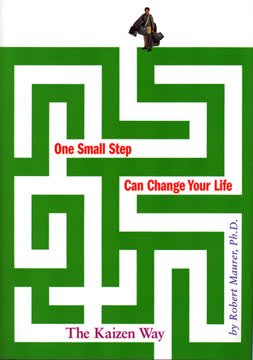Key Takeaways
1. Inception: Plant Ideas in Others' Minds for Effortless Persuasion
Instead of pushing your idea on the buyer, it's a better move to guide them to discover it on their own, so they believe it, trust it, and get excited about it.
The power of self-discovery. Inception is the art of implanting an idea in someone's mind so subtly that they believe it originated from their own thoughts. This technique is far more effective than traditional selling methods because people inherently trust and value their own ideas more than those presented by others.
Key components of Inception:
- Status Tip-Off: Establish yourself as a peer or insider
- Flash Roll: Demonstrate expertise in a brief, technical display
- Pre-Wired Ideas: Tap into existing thought patterns
- Plain Vanilla: Make new concepts feel familiar and non-threatening
- Buyer's Formula: Guide the decision-making process
By mastering these techniques, you can influence others without applying pressure or resorting to conventional sales tactics. The goal is to create an environment where the buyer feels they've arrived at the decision independently, leading to stronger commitment and enthusiasm for your proposal.
2. Status Alignment: Match Your Status to Influence Decision Makers
People in the same position of the dominance hierarchy are drawn to each other magnetically.
The importance of perceived equality. Humans operate within a rigid power framework called the dominance hierarchy. To effectively influence someone, you must first align your perceived status with theirs. This alignment creates a sense of mutual understanding and respect, making the other person more receptive to your ideas.
Achieving Status Alignment:
- Use industry-specific lingo
- Demonstrate recent, relevant actions in the field
- Reference current issues that insiders care about
- Deliver a Status Tip-Off: A brief statement that signals your insider status
By matching the status of your target audience, you break down initial barriers and create a foundation of trust. This alignment is crucial for effective communication and persuasion, as people are naturally more inclined to listen to and agree with those they perceive as equals or peers in their field.
3. Creating Certainty: Establish Yourself as an Undisputed Expert
Certainty Gap. The larger this gap gets, the more you will start to feel psychological anxiety and even physical distress—causing you to back away from the deal.
Bridge the gap with expertise. When faced with uncertainty, buyers often hesitate or back away from deals. To overcome this, you must establish yourself as an undisputed expert in your field. This expertise helps close the "Certainty Gap" – the difference between what the buyer knows and what they need to know to feel confident in their decision.
The Flash Roll technique:
- Deliver a 60-90 second display of technical mastery
- Use industry jargon and specific examples
- Demonstrate problem-solving abilities
- Speak at a faster-than-normal pace
- Maintain a matter-of-fact tone
By using the Flash Roll, you quickly establish your credibility and expertise, giving the buyer confidence in your abilities and reducing their perceived risk. This technique is particularly effective when you need to make a strong impression in a short amount of time.
4. Pre-Wired Ideas: Leverage Existing Thought Patterns for Quick Buy-In
We are constantly on the lookout for cheaters and we love to see them punished—we literally crave the experience of fairness.
Tap into innate human desires. Pre-Wired Ideas are concepts that align with existing thought patterns in the human brain. By leveraging these ideas, you can quickly gain buy-in and understanding from your audience. The three most powerful Pre-Wired Ideas are:
- Winter Is Coming (Threat): Highlight approaching dangers or changes
- 2X (Reward): Show how your idea doubles results or halves costs
- Skin in the Game (Fairness): Demonstrate your personal investment and commitment
These ideas activate specific receptors in the brain, making your message more compelling and easier to understand. By framing your proposal within these familiar concepts, you create a sense of urgency, value, and trust that resonates with your audience's natural instincts and desires.
5. The Power of Plain Vanilla: Make Novel Concepts Feel Familiar
To influence people to try a new kind of anything, you first need to find somebody who is willing to listen to you talk about your new thing, whatever it is.
Balance novelty and familiarity. People are naturally attracted to new ideas but are also wary of things that are too unfamiliar. The key to introducing innovative concepts is to present them as mostly familiar with just one novel aspect. This approach, called Novelty Chunking, helps bridge the gap between the known and the unknown.
Implementing Plain Vanilla:
- Identify all novel aspects of your idea
- Group these aspects into a single category
- Present your idea as similar to existing concepts in all but one key way
- Explain how this one difference is becoming the new norm in your industry
By framing your innovative idea within a familiar context, you reduce resistance and make it easier for others to understand and accept. This technique allows you to introduce groundbreaking concepts without overwhelming your audience or triggering their natural aversion to change.
6. Leveraging Pessimism: Embrace Negativity to Build Trust
It's pessimism, not optimism, that is the formula for success in sales.
The power of acknowledging downsides. Contrary to popular belief, excessive optimism can create stress for buyers and disrupt their decision-making process. Instead, embracing a degree of pessimism can build trust and credibility. By acknowledging potential negatives, you demonstrate honesty and allow the buyer to process their concerns.
Effective use of pessimism:
- Proactively address obvious flaws in your proposal
- Allow the buyer to voice their concerns
- Demonstrate how you've considered and prepared for potential issues
- Use the Buyer's Formula to guide the conversation within acceptable boundaries
By incorporating pessimism into your approach, you create a more balanced and authentic dialogue. This honesty helps buyers feel more in control of the decision-making process and ultimately leads to stronger, more committed agreements.
7. How to Be Compelling: Maintain a Consistent, Authentic Persona
The human brain is built to seek out relationships that offer consistency in character.
Avoid the multiple personality trap. Many salespeople fall into the trap of shifting between different personas during a presentation, which can confuse and alienate buyers. Instead, focus on maintaining a consistent, authentic persona throughout your interactions.
The Five Personalities to Avoid:
- The Ultimate Nice Guy
- The ShamWow Guy
- The Sorcerer
- The Angel
- The Wolf
Rather than cycling through these archetypes, strive to present yourself as a consistent expert with a clear set of values and principles. This approach, known as "Stick to Your Guns Theory," helps build trust and makes you more compelling to potential buyers. By maintaining a steady persona, you allow the buyer to form a reliable mental model of who you are, leading to stronger connections and more successful deals.
8. The Buyer's Formula: Guide Prospects Through Decision-Making
To target the part of the brain that produces the feeling of Ding! I've got it!
Create an "aha" moment. The Buyer's Formula is a structured approach to guiding prospects through the decision-making process. By following this formula, you can help buyers feel like they've discovered the solution on their own, leading to stronger commitment and enthusiasm for your proposal.
The seven steps of the Buyer's Formula:
- Introduce yourself as an expert
- Outline obvious ways to fail
- Highlight counterintuitive ways to fail
- List obvious actions to take
- Share less obvious "hacks" or insights
- Hand over autonomy to the buyer
- Redirect to keep the buyer "in bounds"
By following this formula, you create an invisible fence that keeps the conversation focused on relevant topics while giving the buyer a sense of control. This approach helps build trust and credibility while guiding the prospect towards a favorable decision.
9. Flip the Script: Reframe Situations to Your Advantage
No offense, but dressing like that up here, they're going to think you're stupid or crazy or both.
Adapt and reframe. Flipping the script means reframing situations to your advantage, often by challenging conventional wisdom or expectations. This technique can help you overcome seemingly impossible obstacles and turn potential losses into wins.
Key aspects of flipping the script:
- Challenge assumptions and preconceptions
- Look for unconventional solutions to problems
- Reframe negative situations as opportunities
- Adapt your approach to fit the context and audience
By mastering the art of flipping the script, you can navigate complex business situations more effectively and find creative solutions to challenging problems. This skill allows you to maintain control in negotiations, overcome objections, and ultimately achieve your goals even in difficult circumstances.
Last updated:
FAQ
What's "Flip the Script" about?
- Core Concept: "Flip the Script" by Oren Klaff is about changing the traditional sales approach to make the buyer feel like they came up with the idea themselves. This method aims to reduce sales pressure and increase deal success.
- Sales Environment: The book addresses the challenges of selling in a modern environment where buyers are skeptical and resistant to traditional sales tactics.
- Inception Technique: Klaff introduces the concept of "Inception," which involves planting an idea in the buyer's mind so they believe it originated from them.
- Practical Application: The book provides a step-by-step guide on how to implement these techniques in real-world sales scenarios.
Why should I read "Flip the Script"?
- Modern Sales Challenges: It offers solutions to overcome the skepticism and resistance buyers have developed against traditional sales methods.
- Innovative Techniques: The book introduces new methods like Inception and Status Alignment, which are not commonly found in other sales literature.
- Real-Life Examples: Klaff uses real-world examples and case studies to illustrate how these techniques can be applied effectively.
- Broad Applicability: The strategies are applicable not just in sales, but in any situation where persuasion and influence are needed.
What are the key takeaways of "Flip the Script"?
- Inception Method: Learn how to plant ideas in a buyer's mind so they feel like they came up with the idea themselves.
- Status Alignment: Establish yourself as an equal to the buyer to gain their attention and respect.
- Certainty and Expertise: Use techniques like the Flash Roll to instill confidence in your expertise and the reliability of your offer.
- Pre-Wired Ideas: Address the buyer's inherent concerns and motivations using concepts like "Winter Is Coming" and "2X."
How does Oren Klaff's "Inception" method work?
- Planting Ideas: The Inception method involves subtly introducing ideas to the buyer so they feel like they originated the idea.
- Psychological Basis: It leverages the human brain's tendency to trust its own ideas more than those imposed by others.
- Step-by-Step Process: Klaff outlines a structured approach to guide the buyer to discover and embrace your idea.
- Real-Life Application: The book provides examples of how this method has been successfully used in high-stakes business deals.
What is "Status Alignment" in "Flip the Script"?
- Equal Footing: Status Alignment is about positioning yourself as an equal to the buyer, which makes them more receptive to your ideas.
- Initial Engagement: It involves using a Status Tip-Off, a brief story or phrase that signals you are part of the buyer's in-group.
- Building Trust: This alignment helps in building trust and rapport, making the buyer more open to your pitch.
- Practical Examples: Klaff provides examples of how to achieve Status Alignment in various business scenarios.
What is the "Flash Roll" technique in "Flip the Script"?
- Demonstrating Expertise: The Flash Roll is a rapid-fire display of technical mastery designed to instill certainty in the buyer's mind.
- Short and Impactful: It should be delivered in 60 to 90 seconds, using dense, technical language to showcase your expertise.
- Confidence Building: This technique helps in building confidence in your capabilities and the reliability of your offer.
- Real-World Use: Klaff shares examples of how the Flash Roll has been used effectively in business negotiations.
What are "Pre-Wired Ideas" in "Flip the Script"?
- Addressing Core Concerns: Pre-Wired Ideas are concepts designed to fit into the buyer's existing mental frameworks, addressing their core concerns.
- Three Key Questions: They answer the questions: Why should I care? What's in it for me? Why you?
- Specific Scripts: Klaff introduces scripts like "Winter Is Coming" and "2X" to activate the buyer's threat, reward, and fairness receptors.
- Simplifying Complexity: These ideas help simplify complex information, making it easier for the buyer to understand and accept your pitch.
How does "Flip the Script" suggest handling buyer pessimism?
- Embrace Pessimism: Klaff suggests embracing buyer pessimism rather than fighting it, as it is a natural part of the decision-making process.
- Autonomy and Control: Give the buyer autonomy to explore both the positives and negatives of your offer within set boundaries.
- Invisible Boundaries: Use a Buyer’s Formula to set invisible boundaries that guide the buyer's questions and concerns.
- Building Trust: This approach helps in building trust and reducing the buyer's resistance to your pitch.
What is the "New Normal" concept in "Flip the Script"?
- Plain Vanilla Approach: The New Normal involves presenting your offer as a Plain Vanilla concept with one key difference that sets it apart.
- Reducing Novelty Anxiety: By chunking all novel aspects into one category, you reduce the buyer's anxiety about trying something new.
- Market Positioning: This technique helps position your offer as the new standard in the market, making it more appealing to buyers.
- Practical Application: Klaff provides examples of how to use this concept to make your offer more compelling.
What are the best quotes from "Flip the Script" and what do they mean?
- "Products are bought, not sold." This quote emphasizes the shift from traditional sales methods to a buyer-driven approach where the buyer feels in control.
- "Flip the script, go anywhere, try anything." It encourages readers to be bold and innovative in their sales strategies, breaking away from conventional methods.
- "Inception is not a mystery; it's a step-by-step process." This highlights that the Inception method is a structured approach that anyone can learn and apply.
- "Status Alignment is the first step to making a deal." It underscores the importance of establishing yourself as an equal to the buyer to gain their attention and respect.
How can "Flip the Script" be applied outside of sales?
- Negotiation: The techniques can be used in any negotiation scenario to influence and persuade others effectively.
- Leadership: Leaders can use these methods to align their team and instill confidence in their vision and decisions.
- Personal Relationships: The concepts of Status Alignment and Inception can improve communication and understanding in personal relationships.
- Entrepreneurship: Entrepreneurs can apply these strategies to pitch their ideas to investors and partners successfully.
What is Oren Klaff's background and expertise?
- Sales and Negotiation Expert: Oren Klaff is a leading expert in sales, raising capital, and negotiation, with extensive experience in high-stakes business deals.
- Author and Speaker: He is the author of "Pitch Anything" and "Flip the Script," and has written for major publications like Harvard Business Review and Inc.
- Investment Partner: Klaff is an investment partner in a $200 million private equity fund, showcasing his expertise in financial and business strategy.
- Motorcycle Enthusiast: In his spare time, Klaff is a motorcycle enthusiast, adding a personal touch to his professional persona.
Review Summary
Flip the Script receives mixed reviews, with praise for its entertaining stories and practical sales techniques, but criticism for the author's boastful tone. Readers appreciate Klaff's innovative approach to persuasion and his engaging writing style. However, some find the anecdotes exaggerated and question the credibility of certain examples. The book's framework for pitching and closing deals is generally well-received, though some argue it repackages existing ideas. Overall, it's considered a valuable resource for those in sales and business, despite its polarizing narrative style.
Similar Books










Download PDF
Download EPUB
.epub digital book format is ideal for reading ebooks on phones, tablets, and e-readers.





